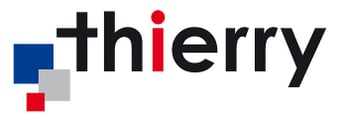Anisotropic Etching - Bulk plasma etching provided • Ashing plasma sources available
There are two types of plasma etching: Anisotropic etching and Isotropic etching. The differences between isotropic and anisotropic etching has to do with the shape that they carve out under the etching mask. Anisotropic etching is when the plasma etch is perpendicular and occurs in one direction whereas isotropic etching occurs when the plasma etch is in all directions. Anisotropic etching and isotropic etching are possible to accomplish using Thierry’s low-pressure plasma systems.
The Methods and Uses for Anisotropic Etching
Anisotropic etching is used in the production of wafers for semiconductor technology. The perpendicular anisotropic etch is perfect for carving out circuit patterns. Anisotropic etching is achieved by using a process called reactive ion etching (RIE). By placing electrodes on either side of the object being etched the ions then bounce from one electrode to the other barraging the material surface at a perpendicular angle. This avoids the rounding of the etch that occurs in isotropic etching.
To learn more about etching, check out our eBook titled "Plasma Etching and Cleaning Strategy for Better Product Quality."

